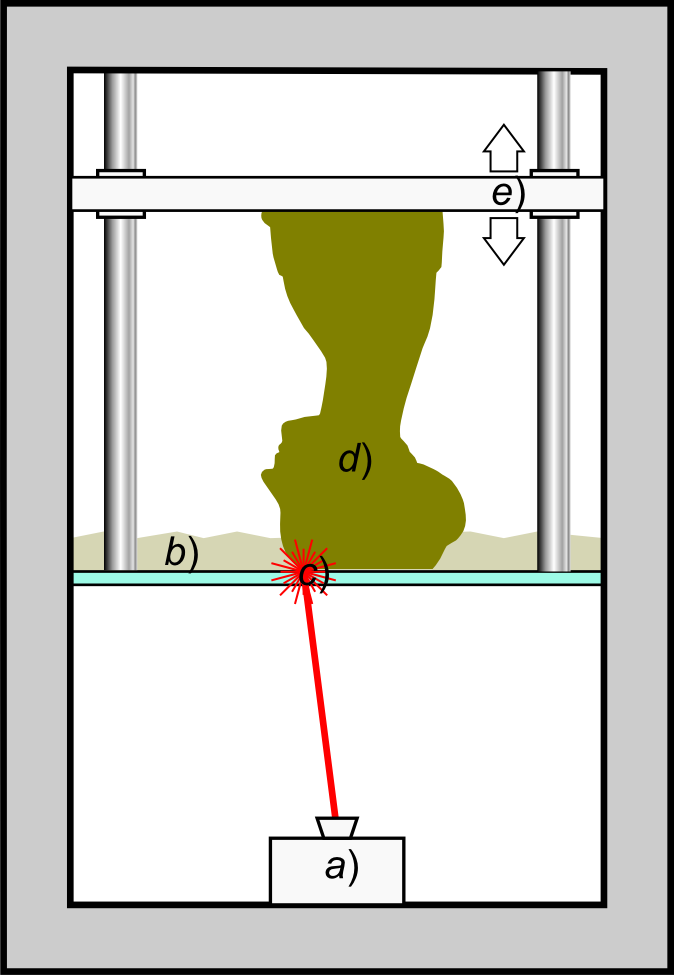|
Computed Axial Lithography
Computed axial lithography is a method for 3D printing based on CT scan, computerised tomography scans to create objects from photo-curable resin. The process was developed by a collaboration between the University of California, Berkeley and the Lawrence Livermore National Laboratory. Unlike other methods of 3D printing, computed axial lithography does not build models through depositing layers of material, as Fused filament fabrication, fused deposition modelling and stereolithography does, instead it creates objects using a series of 2D images projected onto a cylinder of resin. It is notable for its ability to build object much more quickly than other methods using resins and the ability to embed objects within the objects. References {{Reflist 3D printing processes ... [...More Info...] [...Related Items...] OR: [Wikipedia] [Google] [Baidu] |
3D Printing
3D printing or additive manufacturing is the Manufacturing, construction of a three-dimensional object from a computer-aided design, CAD model or a digital 3D modeling, 3D model. It can be done in a variety of processes in which material is deposited, joined or solidified under Computer Numerical Control, computer control, with material being added together (such as plastics, liquids or powder grains being fused), typically layer by layer. In the 1980s, 3D printing techniques were considered suitable only for the production of functional or aesthetic prototypes, and a more appropriate term for it at the time was rapid prototyping. , the precision, repeatability, and material range of 3D printing have increased to the point that some 3D printing processes are considered viable as an industrial-production technology, whereby the term ''additive manufacturing'' can be used synonymously with ''3D printing''. One of the key advantages of 3D printing is the ability to produce very ... [...More Info...] [...Related Items...] OR: [Wikipedia] [Google] [Baidu] |
University Of California, Berkeley
The University of California, Berkeley (UC Berkeley, Berkeley, Cal, or California) is a public land-grant research university in Berkeley, California. Established in 1868 as the University of California, it is the state's first land-grant university and the founding campus of the University of California system. Its fourteen colleges and schools offer over 350 degree programs and enroll some 31,800 undergraduate and 13,200 graduate students. Berkeley ranks among the world's top universities. A founding member of the Association of American Universities, Berkeley hosts many leading research institutes dedicated to science, engineering, and mathematics. The university founded and maintains close relationships with three national laboratories at Berkeley, Livermore and Los Alamos, and has played a prominent role in many scientific advances, from the Manhattan Project and the discovery of 16 chemical elements to breakthroughs in computer science and genomics. Berkeley is ... [...More Info...] [...Related Items...] OR: [Wikipedia] [Google] [Baidu] |
Lawrence Livermore National Laboratory
Lawrence Livermore National Laboratory (LLNL) is a federal research facility in Livermore, California, United States. The lab was originally established as the University of California Radiation Laboratory, Livermore Branch in 1952 in response to the detonation of the first atomic bomb by the Soviet Union during the Cold War. It later became autonomous in 1971 and was designated a national laboratory in 1981. A federally funded research and development center, Lawrence Livermore Lab is primarily funded by the U.S. Department of Energy and it is managed privately and operated by Lawrence Livermore National Security, LLC (a partnership of the University of California), Bechtel, BWX Technologies, AECOM, and Battelle Memorial Institute in affiliation with the Texas A&M University System. In 2012, the laboratory had the synthetic chemical element livermorium (element 116) named after it. Overview LLNL is self-described as a "premier research and development institution for sci ... [...More Info...] [...Related Items...] OR: [Wikipedia] [Google] [Baidu] |
Fused Filament Fabrication
Fused filament fabrication (FFF), also known as fused deposition modeling (with the trademarked acronym FDM), or called ''filament freeform fabrication'', is a 3D printing process that uses a continuous filament of a thermoplastic material. Filament is fed from a large spool through a moving, heated printer extruder head, and is deposited on the growing work. The print head is moved under computer control to define the printed shape. Usually the head moves in two dimensions to deposit one horizontal plane, or layer, at a time; the work or the print head is then moved vertically by a small amount to begin a new layer. The speed of the extruder head may also be controlled to stop and start deposition and form an interrupted plane without stringing or dribbling between sections. "Fused filament fabrication" was coined by the members of the RepRap project to give an acronym (FFF) that would be legally unconstrained in its use. Fused filament printing is now the most popular process (b ... [...More Info...] [...Related Items...] OR: [Wikipedia] [Google] [Baidu] |
Stereolithography
Stereolithography (SLA or SL; also known as vat photopolymerisation, optical fabrication, photo-solidification, or resin printing) is a form of 3D printing technology used for creating models, prototypes, patterns, and production parts in a layer by layer fashion using photochemical processes by which light causes chemical monomers and oligomers to cross-link together to form polymers.U.S. Patentbr>4,575,330(“Apparatus for Production of Three-Dimensional Objects by Stereolithography”) Those polymers then make up the body of a three-dimensional solid. Research in the area had been conducted during the 1970s, but the term was coined by Chuck Hull in 1984 when he applied for a patent on the process, which was granted in 1986. Stereolithography can be used to create prototypes for products in development, medical models, and computer hardware, as well as in many other applications. While stereolithography is fast and can produce almost any design, it can be expensive. History ... [...More Info...] [...Related Items...] OR: [Wikipedia] [Google] [Baidu] |




